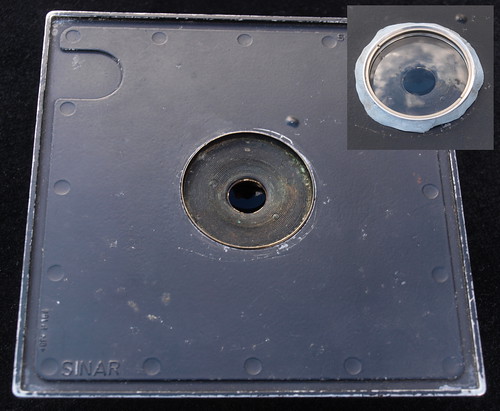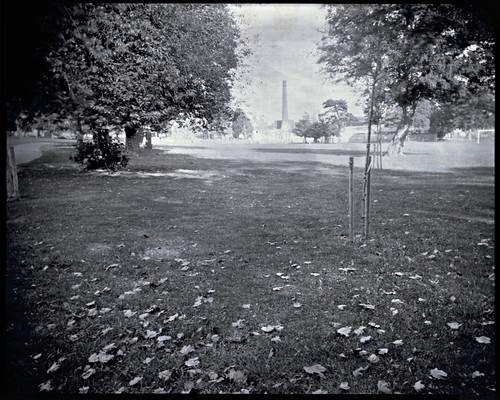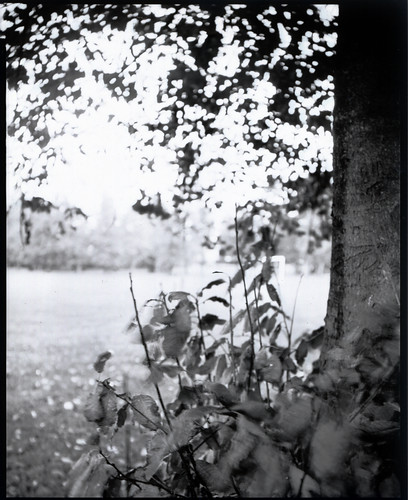We are used to using positive lenses as accessory lenses, usually as close-up adapters. These are typically placed in front of the main lens and allow one to focus on closer objects that would otherwise be the case. They work by increasing the strength of the main lens, i.e. decreasing the focal length. They are usually quoted in dioptres: +1, +2, +3, +4, +10, etc.
Telek lenses
In the good old days there were plenty of other lens adapters. One particularly interesting sort is the Kodak Telek lens (sadly no longer made) which were negative adapter lenses. For example, this one fits "series VI" fittings and is -2 dioptre.

I suppose the reason these are not popular now is that most cameras have fixed fittings and to use a Telek lens on a camera on would have to move the lens further away from the camera. With the right camera, that could be done (just). You could add a Telek lens and an extension tube. Then the result would be a longer focal length, so would magnify more, a bit like a telephoto lens. Definitely worth a try if you have the necessary parts.
I had a Telek sitting in my box of spare parts for some time. I never quite found a particularly good use for it. Until, that is, an interesting vintage lens came in the post which I wanted to try on my 10x8 camera.

This lens dates to about 1880 give or take a few years, and is by M.P. Tench. Tench had worked with Dallmeyer until he set up on his own. This lens is a simple doublet with an aperture set back well behind, and might have been used as a landscape lens for 1/2 plate, or possibly 4x5.
The problem was that this lens was just a bit too small for my 10x8 camera and (to see it working as I wanted to, the bad parts of its image as well as the good) it was a bit too large for 4x5. The image it made on 10x8 was a circle, but I wanted it to fill the whole frame. I measured its focal length at about 150mm, and realised I wanted something just like it that was about 200mm.
Since my Telek lens increases focal length (at some loss in quality, which would not be significant when one is contact printing 10x8 negatives) it would be just the thing I need. There was a small matter of selecting whether to put the Telek on the front or the back. It turned out that it fitted beautifully at the back, which was probably the best place for it anyway. So that's what I did.

I mounted my Tench lens on a lens-board and fitted the Telek lens to its rear. Since it was a very good fit, and the Telek is very light, I just used blu-tack. Maybe I shall revisit this arrangement one day, especially if I decide this lens is a "keeper", but works surprisingly well for the time being.
That F number thing
One doesn't get something for nothing. By making the lens longer, but with the same amount of light going through it, the light intensity on the film is less. It is this light intensity that is measured by the "F number". (Or at least that's true without so-called "bellows factors", which we will ignore here.)
The rule that was chosen for F numbers way back is the F number is the focal length of the lens divided by the diameter of the aperture. So a f=50mm lens with an aperture 25mm in diameter is F50/25 or F2. This information is important for any new lens. I measured my Tench/Telek combination as f=200mm and aperture of 12.5mm so decided it was F16, which seems slow by modern day standard but is fairly typical of vintage wide angle lenses and perfectly adequate for what I wanted.
Testing it
Armed with the information about F-numbers I took my camera off to try it out. I loaded some film holders with photographic paper, which I find is much quicker to develop and scan for testing purposes.
For the first test I wanted to see how the lens behaved when focused at infinity.

This was a difficult contrasty subject, and I reduced the contrast here: any lack of contrast is not the fault of the lens. You can see in the corners where the lens is not quite covering the frame, but it gets close and the effect is quite pleasing. The lens has a very nice "antique" look to it, especially in the corners.
For the second test I want to to focus up close and study the out of focus background.

When focused close, there are no longer any coverage problems. Again, it is very pleasing look, with a noticable but subtle swirl in the background.
Nice!
ReplyDeleteI've been on the lookout for a Telek lens for a while, & never seen one. Are they simple single element things (easy to track down) or a bit more complex?